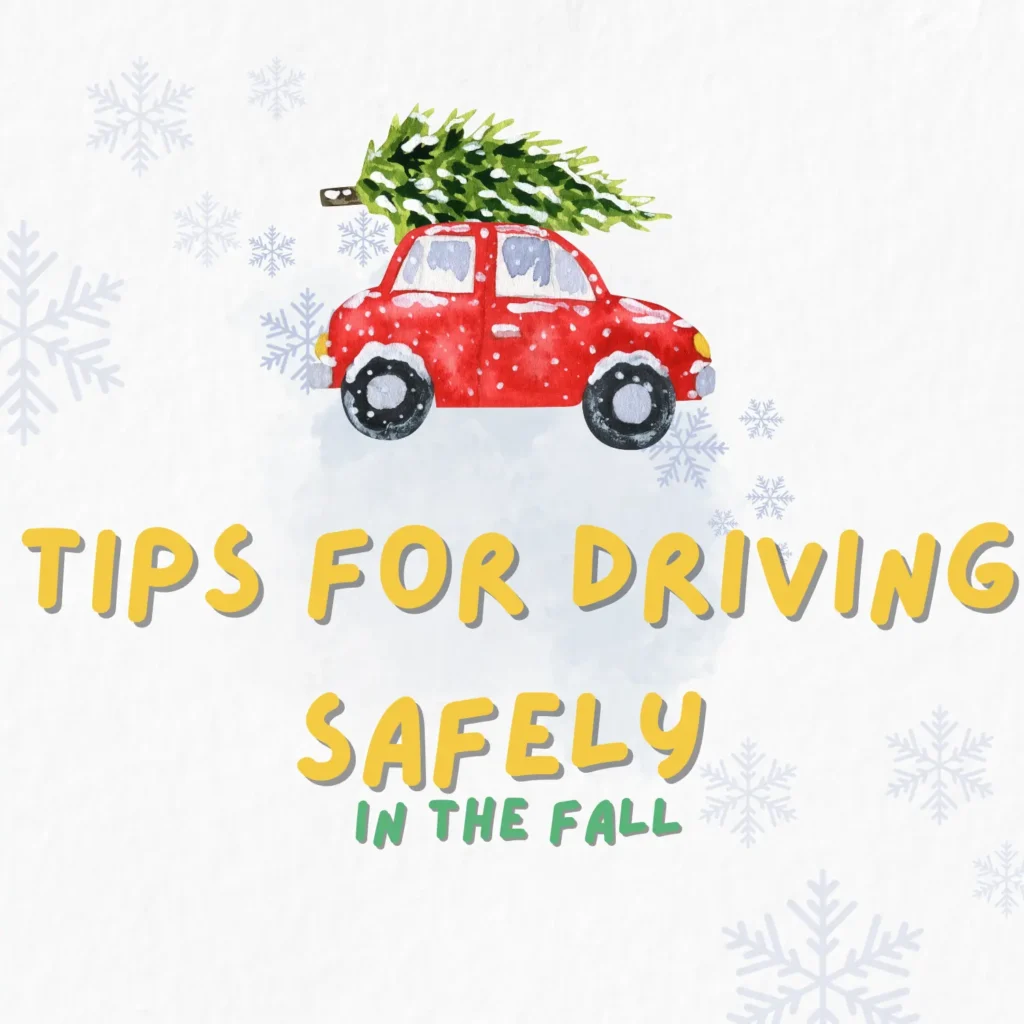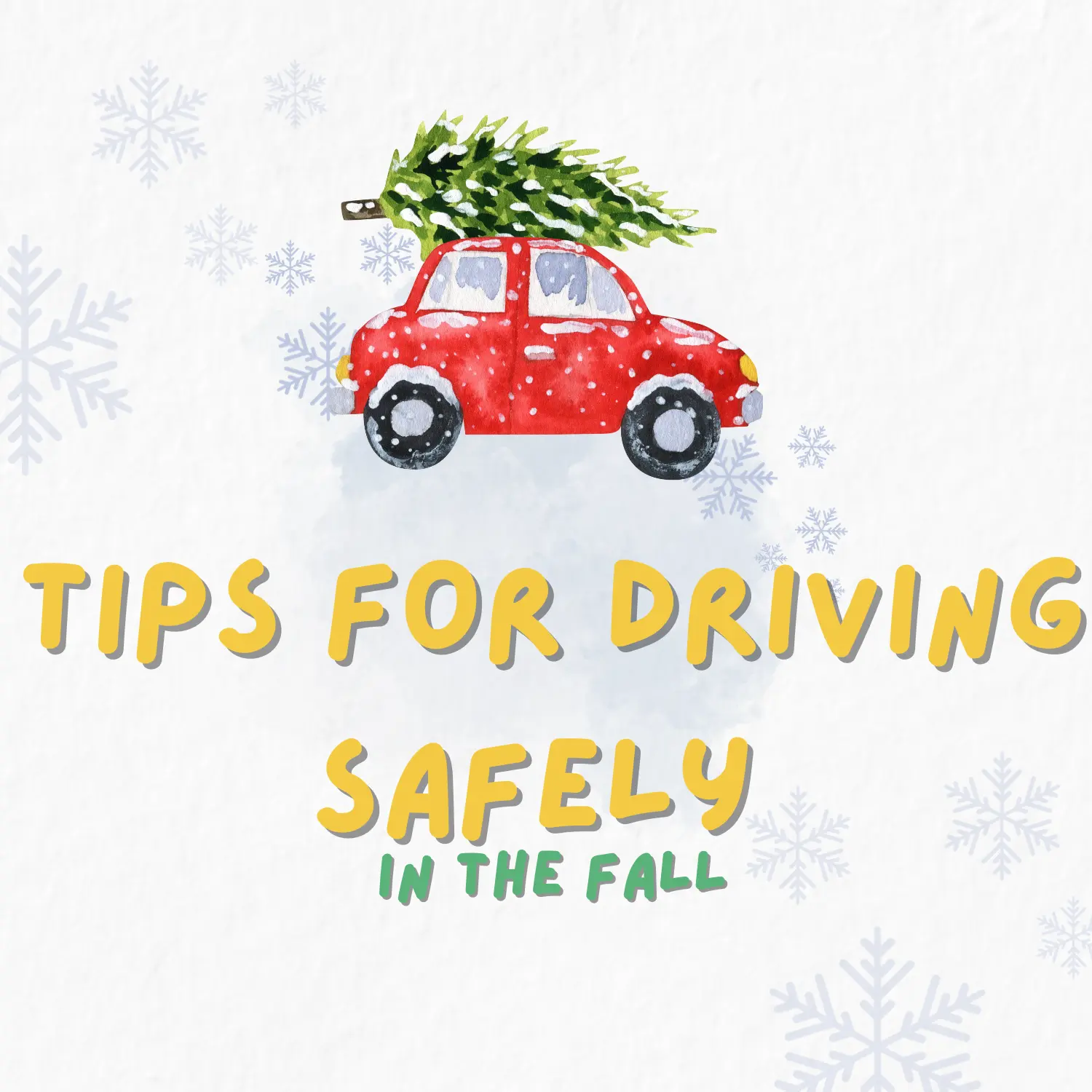Tips For Driving Safely in the Fall
Driving Safely in the Fall : Navigating the Seasonal Challenges. As the vibrant colors of summer transition into the warm hues of autumn, the roads undergo a transformation of their own. Fall brings unique challenges for drivers, from unpredictable weather conditions to changes in daylight. Navigating these challenges requires a combination of awareness, preparation, and adherence to safety practices.
While driving can offer an enjoyable experience, particularly during this season, it’s crucial for drivers to remain vigilant due to a variety of seasonal hazards. The landscape transforms swiftly, introducing challenges such as wet or frozen leaves on the road and rapidly shifting conditions that can lead to the formation of black ice. Navigating through these changes demands heightened attention and a proactive approach to safety.
As the Winter season brings alterations to roads and driving conditions, it’s prudent to consider a set of driving safety tips. These guidelines are designed to assist drivers in safely navigating the challenges that accompany the onset of fall, ensuring a secure and enjoyable driving experience during this time of the year. In this comprehensive guide, we’ll explore a variety of tips to help driving safely in the fall on the roads during the fall season for the drivers.
Increased Awareness of Varied Driving Conditions
With the arrival of Winter, drivers must remain vigilant in response to several factors that come into play. The sun’s lower position on the horizon contributes to heightened glare, presenting a challenge for drivers, especially during rush hour. The shifting sunrise and sunset times throughout the fall significantly alter the lighting conditions on the roadways.

As fall progresses into winter, the diminishing daylight hours become noticeable, a departure from the extended daylight experienced in summer. The late afternoon, in particular, poses difficulties for drivers in spotting pedestrians, cyclists, and children engaged in outdoor activities. You must be driving safely in the fall and be cautions in that weather.
Foggy conditions are a common occurrence during the fall and early winter, further complicating driving scenarios. Reduced visibility becomes a concern, requiring drivers to navigate with added caution. Cold mornings may contribute to frost accumulation on windows, impairing visibility. To address this, it’s crucial to ensure all windows are thoroughly cleared before embarking on a journey. Employing a squeegee to remove morning dew proves beneficial, and an ice scraper serves as a valuable tool not only in winter but also during these transitional seasons. In this article, we will explore some tips for driving safely in the fall in detail.
Tips for Driving Safely in the Fall
Here are some tips for driving safely in the fall that can help drivers.
I. Weather-Related Tips
- Watch for Wet Leaves: Fallen leaves on the road can be as slippery as ice when wet. Exercise caution and reduce speed when driving over leaf-covered surfaces, especially after rainfall.
- Beware of Foggy Mornings: Fall mornings often bring fog that can significantly reduce visibility. Use headlights and fog lights when necessary, and maintain a safe following distance.
- Prepare for Rain and Storms: Fall is notorious for sudden rain showers and storms. Ensure your windshield wipers are in good condition and your headlights are on during rain for improved visibility.
- Monitor Tire Tread: Wet and slippery roads demand adequate tire traction. Check tire tread depth and consider using all-weather or winter tires for enhanced grip.
Remember this tip because it is very effective in the process of driving safely in the fall.
II. Daylight Changes
- Adapt to Reduced Daylight: As the days get shorter, drivers may find themselves commuting in low-light conditions. Turn on headlights earlier in the evening and be mindful of pedestrians and cyclists.
- Use Caution During Sunrise and Sunset: Sun glare during sunrise and sunset can impair visibility. Keep a pair of sunglasses in the car, and use your sun visor to reduce glare.
- Be Aware of Wildlife Activity: With the change in daylight, wildlife may be more active during commuting hours. Stay vigilant, especially in wooded or rural areas, and be prepared to brake if an animal crosses the road.
This daylight change tip must be remembered carefully if you want to driving safely in the winter.
III. Vehicle Maintenance
- Check Your Lights: With reduced daylight and potential fog, ensuring all your lights are operational is crucial. Regularly inspect headlights, brake lights, and turn signals.
- Inspect Your Brakes: Wet and slippery roads pose an elevated risk, underscoring the critical role of well-maintained brakes. Regularly inspect your vehicle’s brake components, including brake pads and rotors, to ensure they are in optimal condition. Look out for any signs of wear, unusual sounds, or diminished braking performance. Addressing these issues promptly is essential for maintaining effective braking capabilities, especially in adverse weather conditions characteristic of the fall season.
- Top-Up Fluids: As temperatures dip during the fall, various fluids in your vehicle may be affected, necessitating proactive maintenance. Begin by checking the levels of essential fluids, including antifreeze, brake fluid, and windshield washer fluid. Adequate levels of antifreeze are crucial to prevent freezing, ensuring your engine runs smoothly even in colder temperatures. Regularly monitoring and topping up these fluids contributes to the overall reliability and functionality of your vehicle, preparing it for the challenges posed by the changing fall weather.
- Test Your Battery: The arrival of cold weather places an increased demand on your vehicle’s battery. To safeguard against potential battery-related issues during the fall and impending winter, conduct a thorough battery test. Check for signs of corrosion on the battery terminals and cables, cleaning them if necessary to promote optimal conductivity. Consider investing in a battery load test, which evaluates the battery’s ability to maintain a charge under different conditions. This comprehensive test provides insights into the overall health of your battery and its capacity to endure colder temperatures.
A vehicle maintenance tip is very important for driving safely in the fall.
IV. School Zones and Pedestrian Safety
- Be mindful of school zones: Fall means back-to-school season. Exercise extreme caution in school zones, adhere to speed limits, and be aware of crossing guards and school buses. School buses play a crucial role in transporting children to and from school. Be aware of school bus signals and follow traffic laws related to school buses. When a school bus extends its stop sign and turns on flashing lights, all traffic, regardless of direction, must come to a complete stop. Only proceed once the bus retracts its stop sign and turns off its lights. When driving near a school bus, maintain a safe following distance. This allows the bus driver to see your vehicle and helps ensure the safety of children boarding or exiting the bus.
- Watch for pedestrians: As the weather cools, more people may choose to walk. Be vigilant at crosswalks and intersections, and yield the right-of-way to pedestrians.
V. Plan for Seasonal Events
- Stay Informed About Local Events: Fall often brings local events like harvest festivals and parades. Stay informed about road closures or increased traffic in your area.
- Plan for Halloween Night: On Halloween, children are out and about in costumes. Drive slowly in residential areas, be extra cautious at crosswalks, and anticipate increased foot traffic.
Remember this tip because it is very effective in the process of driving safely in the fall.
VI. Emergency Preparedness
- Carry an Emergency Kit: As temperatures begin to drop, it becomes increasingly prudent to equip your vehicle with a well-prepared emergency kit. Beyond the basics like blankets, non-perishable snacks, a flashlight, and a first-aid kit, consider enhancing your kit with additional items tailored to colder weather. Include warm clothing such as gloves, hats, scarves, and extra socks to provide added protection against the cold. Portable shelter in the form of emergency blankets or sleeping bags ensures you’re prepared for extended waits or unexpected breakdowns.
- Stay Informed About Weather Forecasts: Check weather forecasts before embarking on longer journeys. Staying informed about weather forecasts is an indispensable aspect of safe and prepared travel, particularly during the fall season when weather conditions can be unpredictable. Before embarking on longer journeys, it’s prudent to check reliable weather sources to gain insights into the current and anticipated weather patterns along your route. This proactive approach allows you to anticipate potential challenges such as rain, snow, or fog, enabling you to make informed decisions about the timing and feasibility of your trip.
Remember this tip because it is very effective in the process of driving safely in the fall.
VII. Defensive Driving Practices
- Maintain a Safe Following Distance: Fall weather introduces a range of unpredictable road conditions. To navigate these uncertainties safely, it’s crucial to maintain a safe following distance from the vehicle in front of you. This distance provides a buffer in case of sudden stops or unexpected maneuvers, reducing the risk of rear-end collisions. As road surfaces may be slippery due to wet leaves or rain, the extra space allows for adequate response time.
- Avoid Distracted Driving: While staying focused on the road is essential year-round, it becomes even more critical in challenging fall conditions. Avoid distractions such as mobile phones, adjusting music, or engaging in prolonged conversations. Distracted driving compromises people’s reaction times and situational awareness, increasing the likelihood of accidents. Prioritize your attention on the road, especially during adverse weather or reduced visibility.
- Adjust Driving Speed: Adapting your driving speed to current road conditions is a fundamental aspect of defensive driving in the fall. Reduce your speed in adverse weather, including rain, fog, or wet leaves, to maintain control of your vehicle. Be particularly cautious of speed limits in residential areas, school zones, and areas with increased pedestrian or cyclist activity. Adjusting your speed proactively enhances overall road safety and reduces the risk of accidents. Remember, it’s better to arrive safely, even if it takes a bit longer.
Remember this tip because it is very effective in the process of driving safely in the fall.
Conclusion
Navigating the roads in the fall requires a proactive approach to safety. From weather-related precautions to vehicle maintenance and defensive driving practices, the key is to be vigilant and adaptable. By incorporating these tips into your driving routine, you can enjoy the beauty of fall while ensuring a safe and secure commute for yourself and others on the road. You must follow all these tips for driving safely in the fall so that you can drive easily and without any danger. If you ignore these tips, then driving safely in the fall is not possible.







